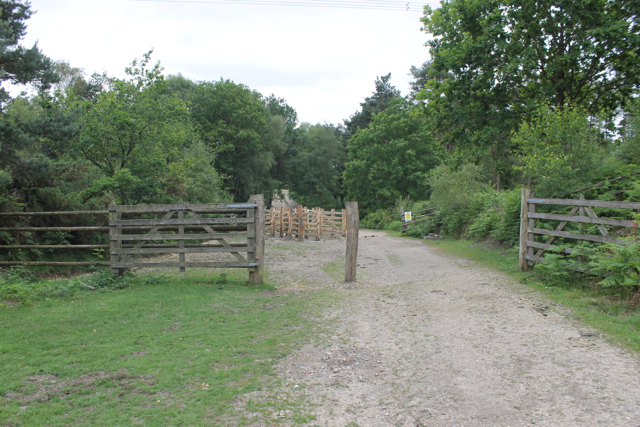
Ponies that regularly wandered beyond the Forest boundary to graze the roadside verges were known as ‘Lane Creepers’.
Before the New Forest was fenced and gridded the free-roaming stock ranged widely outside the official boundary. Commoner’s ponies were known to reach as far as the eastern suburbs of Southampton, down into Christchurch in the southwest, and almost into Salisbury in the north. They were also regular visitors to Romsey, Ringwood, Fordingbridge and other neighbouring towns and villages. The furthest reported case of pony wandering off the Forest was in Abbots Ann, near Andover. The ponies grazed the roadside verges and would take advantage of any gate opened to field, farm or garden. Unfortunately, many Forest ponies became habituated to travelling the lanes, where the pickings were often easier than for their Forest dwelling relatives and it was not uncommon to find half a dozen working their way along the verges. These hardened wanderers became known as ‘Lane Creepers’. Once this habit was established it became very hard to discourage.
Exasperated owners of Lane Creepers, who received regular summonses and fines for allowing their animals to stray on the highway, tried numerous ways to curb the habit. Some commoners, for example, used hobbles, a device attached to the front legs in order to impede the pony’s travel. However, the Forest ponies soon learned to circumvent their bonds and it was reported that some ponies had learned to gallop even in their hobbles! Some commoners tethered the ponies on long chains in the Open Forest but well-meaning visitors would often pull-up the tether-pegs and release the ponies leaving them to wander yet again but with yards of chain trailing behind them. Inevitably the sales ring was where many of the Lane Creepers ended up.
The difficulty with these ponies pursuing their wandering habits was that while they were inside the Forest perambulation they had right of way, but outside the boundary they effectively became trespassers and any damage they caused was liable for payment by their owners. Owners of property that had been invaded were entitled to impound the animals and charge their commoning owners for all costs involved. The ponies that were captured in the public pounds could only be released once the fees had been paid, which included the cost of the pony’s keep. For those poor commoners unfortunate enough to own persistent offenders the costs incurred could be considerable, and certainly more than the pony was worth. So, it was not unheard of for commoners to mount dawn raids on the pounds to release the ponies before they could be identified and their owners fined. However, this tactic was well known and many tales are told of ‘cat and mouse’ games between commoners and the authorities that tell of derring-do and ingenuity of capture and evasion on both sides! Tales that ended, of course, when the Forest boundary was fenced in the early 1960’s.



You must be logged in to post a comment.